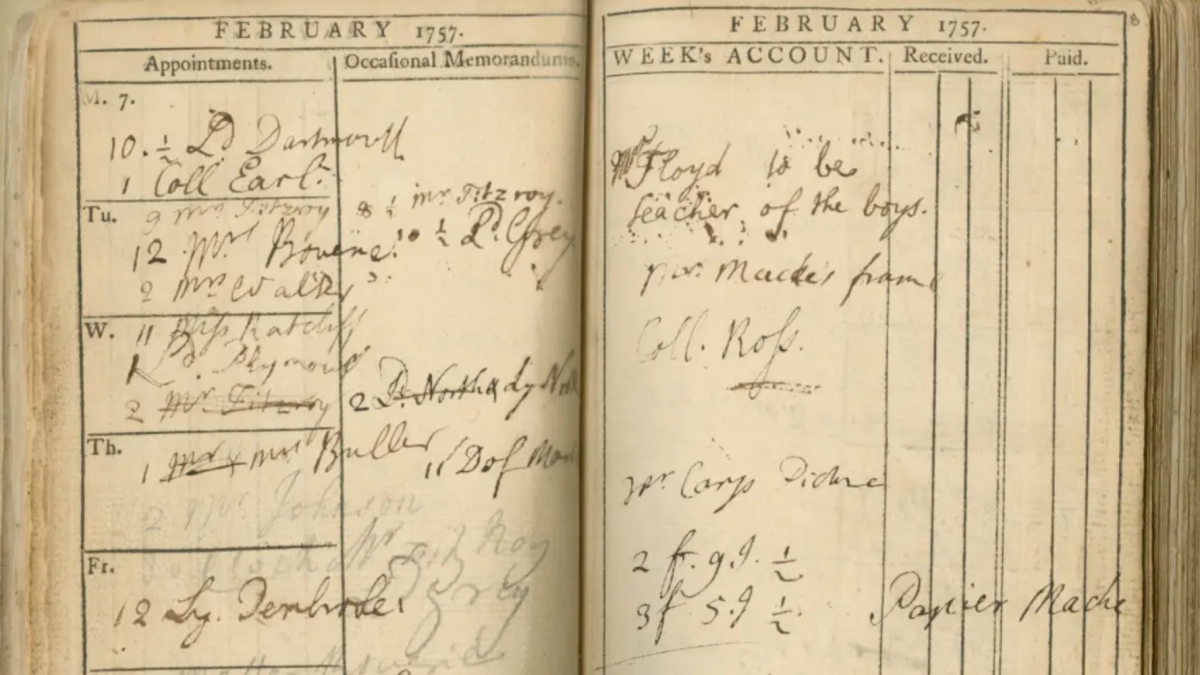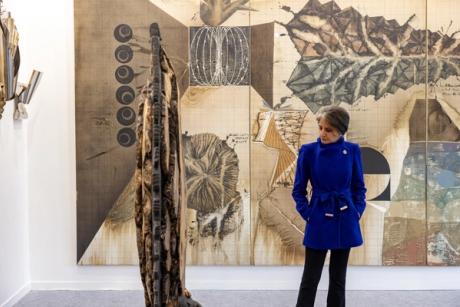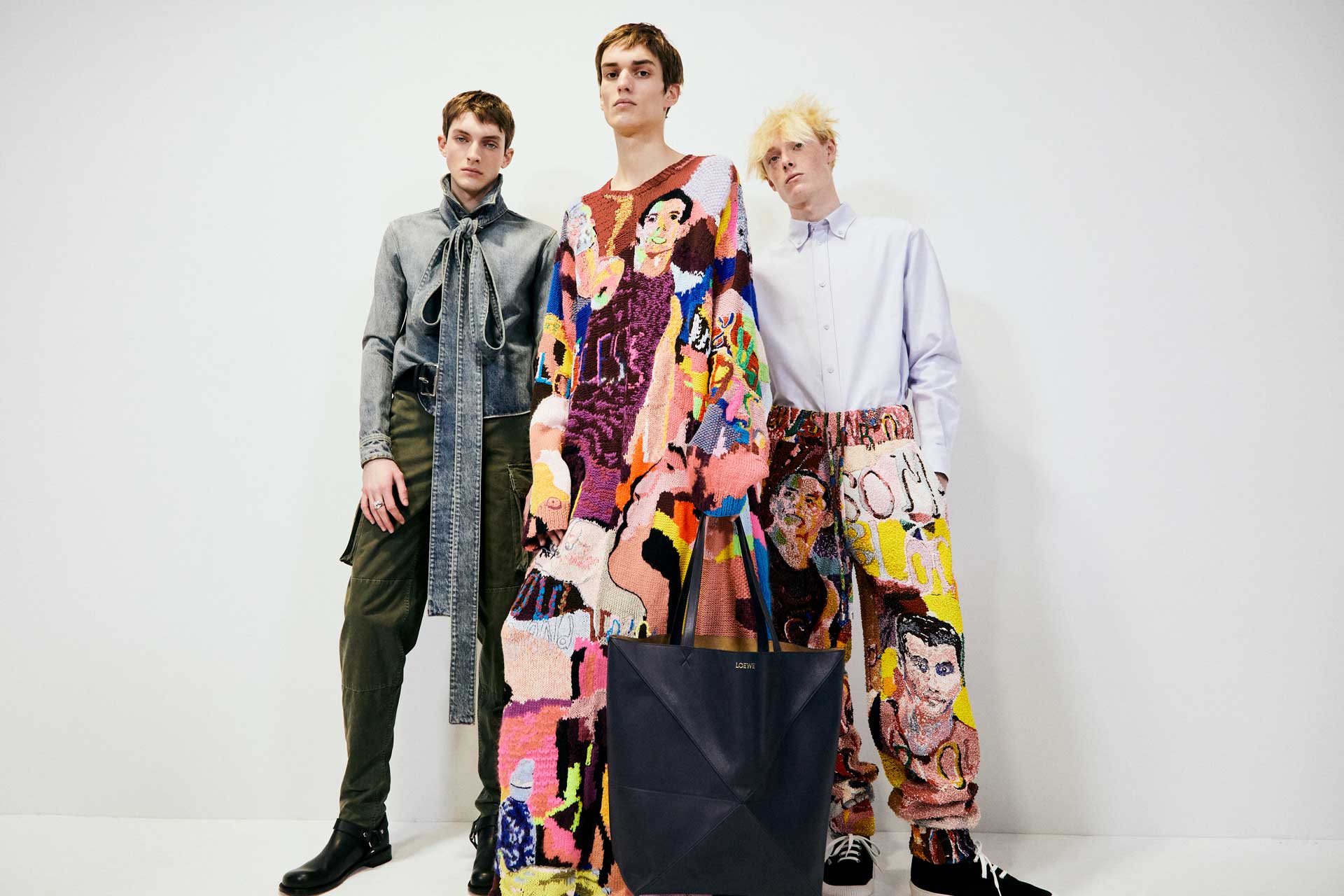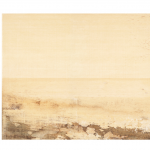Made in Heaven
2004 - Film & Video (Film & Video)
2 min
Mark Leckey
In Made In Heaven , we are face to face with a sculptural apparition, a divine visitation in the artist’s studio. It isn’t just any object, but an iconic sculpture of the end of the 20th century: Jeff Koons’ Bunny. One key question in this work is of course the construction of images, but there is also the question of sculpture, of the passage from two-dimensionality to three-dimensionality. The reason for using the moving image, above all theoretical, is also part of interrogation regarding the material construction of images. For this film, he remakes Koons’s sculpture in order to be able to experiment himself in his studio. One can discern the contours of his studio and sometimes his presence in a lot of his videos. With reference to Marcel Duchamp, he wants to create the ultimate Machine Célibataire (Bachelor Machine), by producing nothing other than itself in reference to the self- reflexivity of Pop. The Bunny is a sculptural form in space which also produces images. It is obvious that we are in an image which is entirely constructed since it is impossible to film the object without having, at a certain point, the reflection of the camera on the steel surface. Mark Leckey is interested in the possibilities of new technologies and places at the heart of his practice the revelation of a sensitive and quasi-magical world. The film loop (which only lasts 2mn) places the spectator in a completely hypnotic state.
Mark Leckey became know in the 1990s with a cult film Fiorucci Made Me Hardcore about English clubs since the early 1970s. Rather like Jeremy Deller, his work at the time was a mixture of Pop culture and counter-culture. In fact a constant in his work is an interest in the icons of our visual culture. In Felix Gets Broadcasted, he became interested in Felix The Cat who was first of all present at the beginning of the 20th century in over 250 newspapers and was the first character to benefit from TV transmission in 1928 in New York. This is the story of a cartoon hero and his successful conversion from cinema to the written press and then to TV, before being integrated into the art system. Mark Leckey is of the same generation as Damien Hirst but has had a very different career path. He was part of an alternative music band and is currently professor of the history of cinema in Frankfurt. He won the Turner Prize in 2008. Mark Leckey was born in Birkenhead, UK . He lives and works in London.
Colors:
Related works of genres: » remodernism, » english contemporary artists
» see more

© » KADIST
Goshka Macuga
2011In this anti-collage, which comes from a series of 4, Macuga takes a photo she found in the archives of Zacheta National Gallery in Warsaw...

© » KADIST
Ryan Gander
2012Epiphany…learnt through hardship is composed of a bronze sculpture depicting the model of the little dancer of Degas, in the pose of a female nude photographed by Edward Weston (Nude, 1936) accompanied by a blue cube...

© » KADIST
Tacita Dean
2001The photographic quality of the film Baobab is not only the result of a highly sophisticated use of black and white and light, but also of the way in which each tree is characterized as an individual, creating in the end a series of portraits...
Related works featuring themes of: » Animation, » Appropriation Art, » Art in Art, » British
» see more

© » KADIST
Matt Lipps
2011In the series Horizons (2010), Lipps uses appropriation to riff on Modernism’s fascination with abstract form...
Other related works, blended automatically
» see more

© » KADIST
Petra Cortright
2012In the flash animation SpringValle_ber_girls , Petra Cortright collages together surreal scenes out of unnaturally idyllic desktop screensavers with equally unreal computer-generated women that pop in and out of the landscape...
Related works sharing similar palette
» see more

© » ROYAL ACADEMY
Discover the diary of Sir Joshua Reynolds PRA | Blog | Royal Academy of Arts Sir Joshua Reynolds, PRA, pocket book © Photo: Royal Academy of Arts, London Discover the diary of Sir Joshua Reynolds PRA Read more Become a Friend Discover the diary of Sir Joshua Reynolds PRA Published 14 July 2023 On the 300th anniversary of the birth of our first president Sir Joshua Reynolds, we’ve digitised his diary for the first time...

© » THEARTNEWSPER
‘Gangbusters’ domestic economy sees prices rise at India Art Fair Art market Museums & heritage Exhibitions Books Podcasts Columns Technology Adventures with Van Gogh Search Search India analysis ‘Gangbusters’ domestic economy sees prices rise at India Art Fair The region’s previous art market boom and bust has some at the New Delhi event questioning whether this new wave can be sustained Kabir Jhala 2 February 2024 Share A visitor at Chemould Prescott Road's stand at India Art Fair 2024 Courtesy of India Art Fair Quiet confidence has turned into bullishness at the 15th edition of India Art Fair (IAF) in New Delhi (until 4 February), South Asia’s largest commercial art event...

© » GALERIE MAGAZINE
5 Buzzy Moments Where Art and Fashion Collide - Galerie Subscribe Art + Culture Interiors Style + Design Emerging Artists Discoveries Artist Guide More Creative Minds Life Imitates Art Real estate Events Video Galerie House of Art and Design Subscribe About Press Advertising Contact Us Follow Galerie Sign up to receive our newsletter Subscribe Loewe 2024...
Related artist(s) to: Mark Leckey » Seth Price, » Hito Steyerl, » Elena Filipovic, » Henrik Olesen, » Louise Bourgeois, » Bruce Nauman, » Frances Stark, » Haegue Yang, » Massimiliano Gioni, » Pedro Reyes
» see more

© » KADIST
Haegue Yang
2016A steel clothing rack adorned with turbine vents, Moroccan vintage jewelry, pinecones and knitting yarn, these heterogeneous elements are used here to create an exotic yet undefined identity within the work...

© » KADIST
Haegue Yang
2010In addition to Yang’s signature drying rack and light bulbs, Office Voodoo includes various office supplies like CDs, paper clips, headphones, a computer mouse, a stamp, a hole puncher, a mobile phone charger...

© » KADIST
Pedro Reyes
2012Pedro Reyes’s Los Mutantes ( Mutants , 2012) is composed of 170 plates that combine characters from ancient and modern mythologies...
Related works found in the same semantic group
» see more

© » KADIST
Volker Eichelmann
2014In his new series of collages, Eichelmann takes his starting point from the “Belvedere Torso” in the Vatican Museum...

© » KADIST
Ruby Sky Stiler
2015The depiction of the female figure in the sculptures remains an economic, canny composition of geometric abstractions in a Modernist spirit...

© » KADIST
Victor & Sergiy Kochetov
1992Ukraine-Russia / Volleyball by Viktor and Sergiy Kochetov features a concrete monument of women volleyball players before the railway station in the village of Vodyanoye, Kharkiv region...








